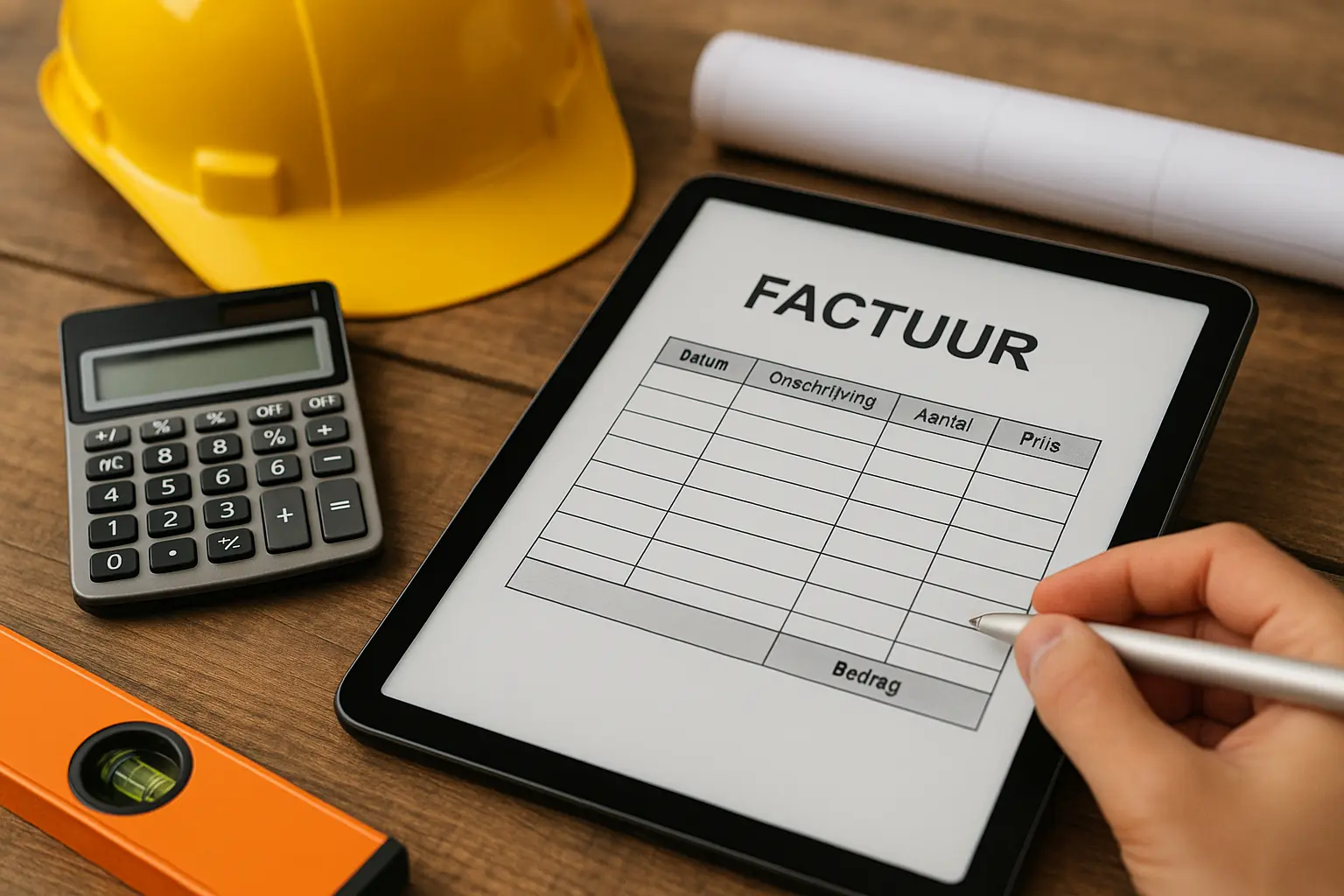1. Invoicing Based on Advance Invoices
The advance invoice is by far the most popular method of construction invoicing. Here, the total project amount is divided into several phases. A common structure is the 20/40/40 split, but this can be flexibly adjusted depending on the project or client agreement.
🔧 How Does It Work?
20% upon signing the quote: Once the client approves the project, you send the first advance invoice.
40% at the start of the work: When the project execution begins, you send the second invoice.
40% upon completion: After the project is finished, you invoice the remaining amount.
➡️ Advantage: You receive payments spread over the project’s duration, ensuring a healthy cash flow.
💡 Tip: With Bouwflow, you can automatically generate advance invoices based on your quote.
2. Invoicing Based on Progress Reports — Ideal for Larger Construction Projects
For larger projects, invoicing via progress reports is the most transparent and professional approach.
A progress report indicates for each phase or component what percentage of the work has already been completed. This progress then serves as the basis for your invoice.
Ideal for an apartment building where each phase (foundation, structural work, finishing) is invoiced separately.
📊 How to Invoice Based on Progress Reports
The invoicing moments are agreed upon in advance with the client. There are two common approaches:
➡️ Advantage: You maintain a clear overview of both completed and invoiced work. ➡️ Extra advantage: The client knows exactly what has been paid and for what.
💡 Bouwflow helps you automatically generate progress reports based on your project planning.
3. Invoicing Based on Work Orders — Fast, Efficient, and Error-Free
For smaller jobs such as interventions, repairs, or installations, invoicing via work orders is the fastest and most efficient method.
This approach ensures transparency, saves time, and minimizes administrative workload.
Think of a heating installer who performs on-site repairs and quickly invoices based on the digital work order.
🧾 What Does a Work Order Include?
A well-completed work order contains:
🚀 How Does the Process Work?
After completion, the client digitally signs the work order.
The work order is then automatically sent to the back office, where your invoicing software converts all the data into a correct invoice.
➡️ Advantage: You save time, avoid errors, and invoice faster.
💡 Connect your work order module directly to your invoicing system in Bouwflow and see how administration becomes a thing of the past.
Which Method Fits Your Type of Construction Company?
Small contractors or installers: work order invoicing is ideal for short jobs with quick turnaround.
Medium-sized renovation companies: advance invoices provide structure and cash flow.
Project developers or general contractors: progress reports provide clarity for complex projects.
Conclusion: The Right Invoicing Method Builds Your Success
Construction invoicing is much more than paperwork — it’s a crucial part of your business strategy.
Whether you choose advance invoices, progress reports, or work orders, the key is having a clear and automated process.
With smart construction software like Bouwflow, you can effortlessly keep an overview of your entire invoicing process — from work order to final invoice. This allows you to work faster, more transparently, and with a healthier cash flow.
🎯 Want to optimize your invoicing process in construction? Book your free demo today and discover how Bouwflow helps you get paid faster and reduce your administration.
Frequently Asked Questions About Invoicing in the Construction Sector
What’s the difference between an advance invoice and a progress report?
An advance invoice is sent at fixed times, for example at the start or completion of the work.A progress report, on the other hand, is used for larger projects where invoicing is done according to the progress of the work.
Can I use a work order as an invoice?
No. A work order is not an official invoice but serves as its basis. The data from the work order is transferred to the final invoice for the client.
How do I determine when to invoice?
That depends on the nature of the work and the agreement with the client.Small jobs are usually invoiced immediately, while larger projects follow a time-based or progress-based invoicing schedule.
What must be included on an invoice in the construction sector?
A valid invoice must include at least:
For an official checklist and guidelines, visit VLAIO’s starters guide: How to create a correct invoice
Can I automate my invoicing process?
Absolutely. With Bouwflow, you can automatically convert work orders into invoices, send payment reminders, and manage progress reports — all in one system.
Choose specialized construction invoicing software like Bouwflow and work more efficiently.
🎯 Ready to simplify your invoicing? Book your free demo now — in just 30 minutes, you’ll discover how to invoice faster and get paid sooner.


